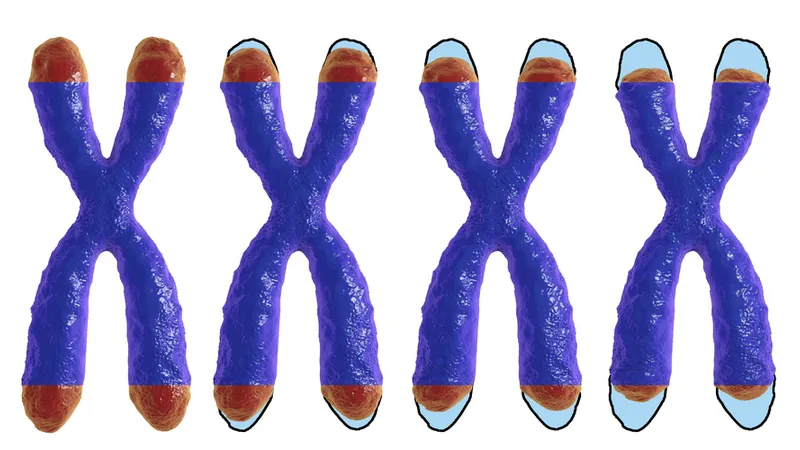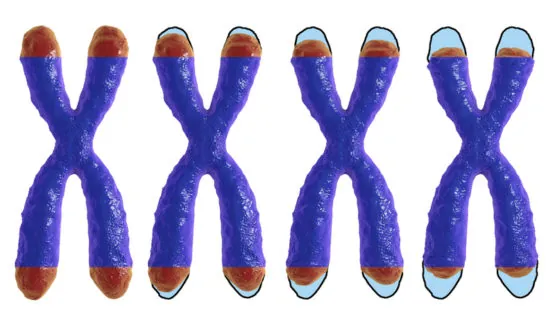Researchers have demonstrated that it is possible to restore telomerase activity in stem cells affected by telomere biology diseases, which prevent them from producing telomerase and repairing their telomeres.
Telomeres and telomerase
Each chromosome that stores our genetic information has a protective cap at each end known as a telomere, a specific DNA sequence that is repeated thousands of times. This sequence has two purposes: it protects the coding regions of the chromosome and prevents it from being damaged, and it acts as a clock that controls the number of replications a cell can make; this is known as the Hayflick limit.
With each cell division, this protective cap is worn away, gradually wearing down and shortening the telomere. The telomeres suffer this steady attrition due to the inability of DNA polymerases to fully restore the sequence of DNA.
Once telomeres reach a critically short length, cellular senescence is initiated as a way of preventing DNA double-strand breaks from being repaired, which can result in fused chromosomes.
This is the case for the majority of our regular somatic cells; however, stem cells are a bit different and have a way to maintain replicative capacity by expressing telomerase reverse transcriptase (TERT). When TERT is combined with the non-coding RNA (ncRNA) template telomerase RNA component (TERC), it creates telomerase ribonucleoprotein (RNP), which is able to replenish the protective telomere repeats. This is what allows our stem cells to keep functioning sometimes for decades or even our entire lives.
However, there are multiple telomere biology diseases in which this telomere maintenance is disrupted in the stem cells, leading to syndromes such as dyskeratosis congenita, a genetic form of bone marrow failure resulting in the inability of the marrow to produce sufficient blood cells. It can also lead to conditions such as aplastic anemia, liver cirrhosis, and pulmonary fibrosis.
The researchers of a new study have demonstrated that it is possible to restore lost telomerase activity in stem cells that have been affected by telomere biology diseases [1]. They show that by using PAPD5 inhibitors, it is possible to restore lost telomere length both in vitro and in mice.
Genetic lesions that reduce telomerase activity inhibit stem cell replication and cause a range of incurable diseases, including dyskeratosis congenita (DC) and pulmonary fibrosis (PF). Modalities to restore telomerase in stem cells throughout the body remain unclear. Here, we describe small-molecule PAPD5 inhibitors that demonstrate telomere restoration in vitro, in stem cell models, and in vivo. PAPD5 is a non-canonical polymerase that oligoadenylates and destabilizes telomerase RNA component (TERC). We identified BCH001, a specific PAPD5 inhibitor that restored telomerase activity and telomere length in DC patient induced pluripotent stem cells. When human blood stem cells engineered to carry DC-causing PARN mutations were xenotransplanted into immunodeficient mice, oral treatment with a repurposed PAPD5 inhibitor, the dihydroquinolizinone RG7834, rescued TERC 3′ end maturation and telomere length.
Conclusion
These findings have the potential to support the development of therapies for treating conditions such as dyskeratosis congenita and pulmonary fibrosis. Also, as telomere attrition and the resulting stem cell exhaustion are hallmarks of aging, this research may also have utility for the treatment of other age-related diseases.
Literature
[1] Nagpal, N., Wang, J., Zeng, J., Lo, E., Moon, D. H., Luk, K., … & Lindsley, R. C. (2020). Small-Molecule PAPD5 Inhibitors Restore Telomerase Activity in Patient Stem Cells. Cell Stem Cell.



